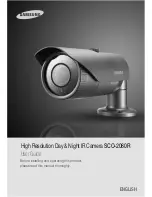
Technical Manual Presence Detector SCN-P/G360XX.02
MDT technologies GmbH •
51766 Engelskirchen • Papiermühle 1
Tel.: +49-2263-
880 •
Fax: +49-2263-4588
• [email protected] • www.mdt.de
30
30
Presence sensitivity
1-8
[6]
Adjustment of the sensitivity after
a first motion has been detected
Motion filter on standby
not active, no filtering
used, delete short
motion
Activation of a motion detector at
standby (= output is switched off)
Length of monitoring
time slot
1-5s
[2s]
Determination of the length for a
monitoring time slot
number of monitoring
time slot
2-5
[3]
Definition of how many
movements have to be detected
before switch-on
Follow-up time
1s-4h
[5min]
Setting the follow-up time
Locking or enabling object
Lock object
Enabling object
Setting whether a locking or
enabling object is to be used
Separate switch object for
night
not active
aktiv
Displays a separate object for
night mode
Output objekt sends at
Only ON
ON and OFF
Output filter for the first output
object
Output objekt sends cyclic
not active
10s-60min
Activation of cyclic sending for the
first output object
Table 13: Settings - Alarm function
The alarm function can be used to monitor a room in case of absence and to call certain actions in
the KNX system during motion detection.
The individual parameters are described in more detail below:
Release sensitivity for Day/Night
The release sensitivity describes the sensitivity in stand-by mode (the output is switched off, no
motion has been detected)
Presence sensitivity
Presence sensitivity describes the sensitivity in presence mode (the output is switched on, a motion
has been detected.).
Motion filter in Standby
In order to avoid false detection, a motion filter can be activated which filters out very short motions
e. g. by draughts. If this filter is activated, then 2 further parameters appear: "Length of the
monitoring time slots" and "Number of monitoring time slots".
This means that a longer detection time is required for switching on. To switch on the channel, at
least one detection has to have taken place in each of the set monitoring time slots.
So e.g. with 3 monitoring time slots and a length of 2 sec for one monitoring slot at least one
detection would have to take place in the first 2 sec, at least one detection in the second 2s and at
least one detection in the third 2 sec. Thus it takes at least 6 seconds until the alarm channel is
triggered.
















































